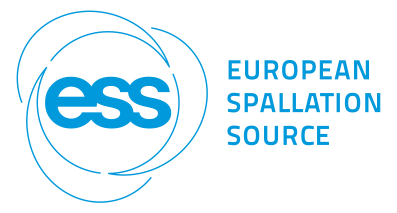Speaker
Description
Unlike traditional short-pulsed spallation sources, the ESS accelerator will deliver long proton pulses—2.86 milliseconds—at maximum energy of 2 GeV and a frequency of 14 Hz. High-brightness neutron beams will be achieved through the use of a compact (3 cm tall) low-dimensional moderator, referred to as the butterfly moderator, and comprising both water at room temperature and liquid para-hydrogen at around 20 K. This allows for the slowing down of spallation neutrons to thermal and cold energies.
The ESS Test Beamline (TBL) has been developed internally to support commissioning of the facility. The experimental cave of the TBL is attached directly to the common shielding ‘bunker’ wall. Most of beamline components are located inside this bunker area, including collimators, a filter stage, a double-disk chopper and the instrument shutter. Positioned perpendicular to incident proton beam, the TBL provides a direct
line of sight to the full moderator surface (approximately 28 cm x 3 cm). Employing a camera obscura principle, the design allows detections of not only moderated neutrons, but also epithermal and fast neutrons as well as gamma rays. During the first three months of operation, the beam power will gradually increase from a modest 20 W (BoT) up to 200 kW. The primary focus of the TBL during this phase is to validate the
success of slow neutron production as well as to give feedback to both accelerator and target(+moderator) operators. Given the initially low neutron flux, particular care in planning is essential to ensure meaningful data can be obtained from the very first BoT events.
As the TBL is designed to receive neutron beams at different beam powers (20 W – 5 MW), the pinhole changer is designed to facilitate different aperture cross sections. An adjustable collimator features 3 different collimator channels, i.e. 3-mm, 10-mm, and 30mm25mm, coupled with optional pinholes (sized 1-10 mm). No neutron guide is used, allowing an unperturbed beam characteristics and direct flight path from
the moderator to the detector. The collimator can be moved in the vertical direction to accommodate trajectories of long wavelength neutrons. A double-disk chopper can be used to select bandwidth of neutrons up to 16 Å at 14 Hz without frame overlap. Neutron filters can be moved to the beam to tailor the neutron spectrum for different purposes.
The TBL hosts a suite of detectors to facilitate comprehensive measurements. During first BoT day, two arrays of He-3 tubes (1 bar and 10 bars) are planned to capture this first low intensity neutron beam. As the facility ramps up from first producing short pulses (5 µs) to the designed long pulse (2.86 ms), other TBL detectors will be positioned to characterize the neutron emission from the moderator surface also with
spatial resolution. The latter will be achieved by using a neutron gas-electron multiplier (nGEM) detector, Multiblade (MB) detector as well as scintillator-camera based detectors with adjustable active areas, among them the neutron event camera system, so-called, LumaCam.
